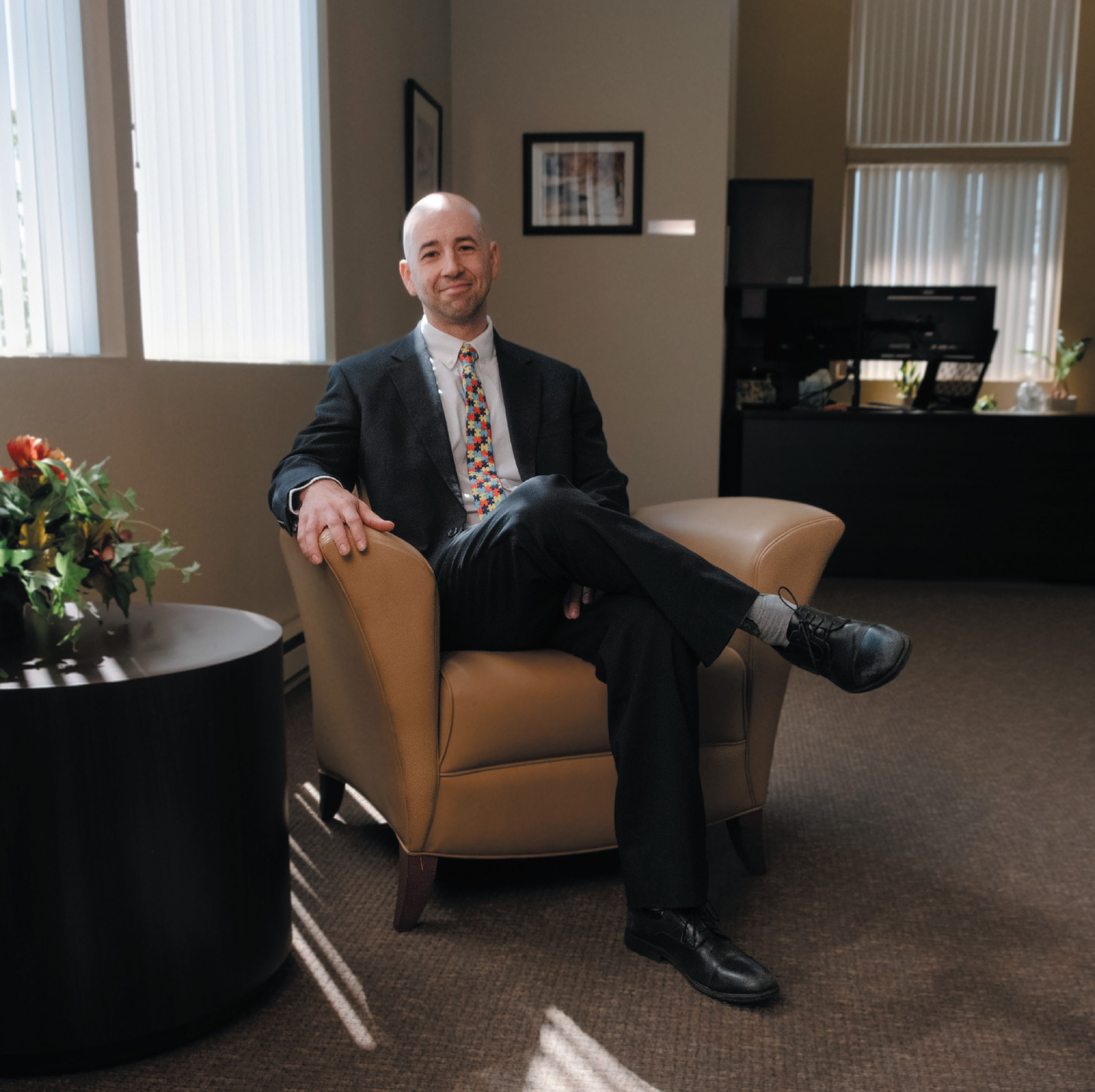REDUCING HARM
They’re reacting to the sobering suicide rate among kids, which is staggeringly high nationwide, and especially in Colorado, where suicide remains the leading cause of death for boys between the ages of eleven and twenty-one.
“In the Children’s Hospital here in Colorado Springs, Pediatric Intensive Care Unit,” said Dr. Kolb. “I had never in my life seen this ever: the majority of the beds were occupied by children with the status ‘suicide attempt.’ They mean it. These are lethal means. They mean to die. Eleven years old, ten years old. What’s happening? I don’t know.”

Many of Dr. Peters’ young patients are also struggling with drug addiction. “Which one is first? That’s a great question. Oftentimes mental illness comes first. Not always. But, yeah, I feel like what I often see is people who are grappling with mental health issues and taking drugs, perhaps as an escape. People often talk about self-medicating, and then they’ll go down the rabbit hole [of addiction], and then you have what we call dual diagnosis. We have a services issue and a mental health issue, and the mental health issue we would have chosen just to treat alone.”
He mentioned harm reduction as a treatment plan in these scary situations. “Studies have shown that it does not matter how many rehabs or detoxes you’ve done, your chances of relapsing are based upon your demographics and your income and all this other stuff. You can do another rehab, sure. But is it likely to change? So Suboxone, the stuff that we utilize here, which we just started in a couple of patients today, is sort of an acceptance of that.”
Suboxone is one of several drugs that work as a limiter on opiate addiction. Instead of taking an addictive drug and getting high with the risk of injury or death, the patient takes Suboxone or a similar medication to simulate the high safely and less intensely, to get the person functional again in their life. It’s even approved for military personnel as long as they’re not in the field. Dr. Peters says this approach works much better than more punitive approaches over the long term.

The availability of these treatments is a positive indicator. Both Dr. Peters and Dr. Kolb are energetic, optimistic doctors with a clear passion for doing whatever it takes to ensure their patients’ well-being—an attitude that puts them both right at home at Diversus Health.
In addition to offering the best in evidence-based treatments, Diversus Health, responding to what Children’s Hospital of Colorado declared a “State of Emergency in youth mental health,” embeds mental health clinicians in certain schools to assist students there. They also offer a 24-hour walk-in crisis center at 115 S. Parkside Dr. that is always there to help whatever a youth or their family member is going through. There is also their emergency crisis hotline at (844) 493-8255.
Diversus Health has also developed the Incredible Years Dinosaur School, an evidence-based program that aims to prevent future mental illness by helping children develop the social-emotional and problem-solving skills that contribute to resiliency in later life. The Youth Mental Health First Aid program is designed to teach parents and others how to help adolescents who are experiencing mental health or addiction challenges: making neighborhoods sources of support.
Why is Colorado Springs seeing such a high occurrence of these issues? Why does El Paso County hold the highest rate of youth suicide in the state despite a much lower percentage of children and adolescents? What is causing such a high rate of youth suicide in our city?
“That is the million-dollar question,” answered Dr. Peters.
As a possible answer, Dr. Kolb pointed to a tremendous shortage of healthcare workers in our city—mental health service providers included. And, she said, there’s still a lot of stigma here surrounding mental health struggles, which often prevents people from reaching out for help, and leads to the self-medicating Dr. Peters mentioned.
“If your child had cancer,” she said, “would we be talking about, ‘Well, why do I really want treatment for my kid?’ Is this any different? It’s the same. It’s an illness. You don’t choose.”
Dr. Peters agreed. “I have compared it to my male pattern baldness…,” he said. “I didn’t ask for it, you know. It’s not like I missed out on certain dietary requirements.”
“You know, you don’t choose to be depressed,” Dr. Kolb said. “You don’t. You’re not bad. You’re depressed. It’s genetic. Just like your hair color and your eye color.”
Dr. Kolb is originally from Spain and lived in New York for many years before coming to Colorado Springs. She has a child with autism and feels a special compassion for families whose kids are struggling with mental health.
“I’ve got my own child at home with special needs. The mothers are falling apart. The fathers are falling apart. The grandparents are falling off. That’s one of the things I like to do in my work. I like to treat parents as well as I can because I think that’s the best way I have to make an impact. I can make an impact on that family. And it’s generational and moves forward.”
Dr. Kolb then introduced the concept of “goodness of fit”—a phrase that speaks not only to how well a child fits into their family or community but even more to how well that family or community fits the child and addresses their needs. Like Russian nesting dolls, no person is separate and independent from the people around them. A city holds a community, a community a neighborhood. Within the neighborhood is a family, and within the family, its children. The suffering of a child, or their happiness, is inextricably connected to the goodness of fit they experience within their community.
“Goodness of fit is the thing,” she said. “Goodness of fit within the family. If you can make [that] work, it doesn’t matter how ill the kid is. The kid could have schizophrenia—and I treat some of those teenagers—and they’re going to be just fine. But you can have the most minor little, teeny tiny sprinkling of ADHD and if you don’t have a goodness of fit, you’re not going to do fine. [In those cases] it doesn’t matter what I do because it’s the community where that child exists. Kids have no control over anything.”
It’s a scenario she’s seen often: where a child’s mental health is affected by goodness of fit—or the lack thereof. “How well adjusted, how well in sync are those parents with that child? How well in sync is that school with that child? If you have a good fit, it’s going to work.”

She described situations she’s seen where there are foster parents, the best-meaning people, but you still can’t put a particular kid in that setting because the kid will not do well in that setting. But what if the child occurs naturally in a setting that does not provide goodness of fit?
“That is difficult,” Dr. Kolb says. “It is difficult to say to the family. It breaks hearts. You cry. But I’ve been in those shoes, so I know what it feels like. And I tell them, ‘stick with me. We’ll get to a better place. This is what you have to do.’ And we can help people. We really can.”





